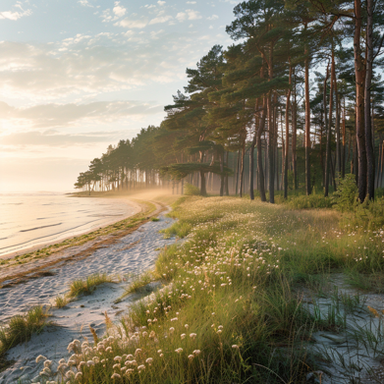HOME | DD
 DrPolaris — The Canopy of Eocene Germany
DrPolaris — The Canopy of Eocene Germany

#speculativeevolution #speculativebiology #speculativezoology
Published: 2018-08-15 23:51:57 +0000 UTC; Views: 10995; Favourites: 179; Downloads: 24
Redirect to original
Description
During the Middle Eocene, most of the world was covered in dense tropical or sub-tropical forests. Global temperatures were significantly higher than at present, leading to an explosion of life in all its many forms. One of the best exemplars of this diversity boom, both on Alter Earth and Our Earth, were the animals found at Messel in Southern Germany. From the numerous, exquisitely preserved specimens unearthed at this site, we are able to build a detailed picture of life during this most fecund of time periods. The image above presents a small selection of the faunal diversity present at Alter Earth Messel roughly 47mya. From the Top Left, these animals are:1. Aarodon saurognathus (Top Left): The largest and most dangerous avian of Messel was Aarodon, a raptorial Avisaurid Enantiornithine with a wingspan of 1.5m and a beakless mouth full of small, sharp teeth. It would almost certainly have caught its tiny, insect eating relatives on the wing, as well as small mammals and reptiles. Avisaurids were common across all continents during the Paleogene, but underwent a subsequent decline during the Oligocene and Miocene. The only lineage that survives today are the scavenging Skeksids of the Americas.
2. Lemuraptor pilosus (Top Middle): Two interesting arboreal members of Microraptoria scoured the tropical canopy of Eocene Germany. Although derived, arboreal Microraptorans have been found in Asian Eocene deposits, these remains were scrappy and gave little indication of the overall body plan of these animals. However, at Messel, both Lemuraptor and Affchenornis are known from complete skeletons with extensive traces of their integument and soft anatomy preserved intact. These Paravians were between 1 and 1.5m in length with long tails, powerful feathered forelimbs and gripping claws suggestive of a predominantly arboreal lifestyle. Their teeth were small, leaf shaped and confined to the tips of the jaws, giving these animals almost Enantiornithine-like faces. Unlike their ancient ancestor Microraptor, these arboreal raptors could not glide and probably scrambled up tree trunks and hanging branches using their hooked claws like climbing crampons. Both genera were omnivorous, with fossils revealing seeds and insects in their abdominal cavities.
3. Eoectypodus dasyurus (Top Right): Squirrel-like Ptilodontid Multituberculates are a common find at Messel, with at least 10 specimens of the genus Eoecytpodus having been found so far. Their remains, like most at Messel, are squashed flat and retain a dark furry outline. These fossils suggest that, like squirrels from OE, Ptilodontids were arboreal herbivores/omnivores that possessed long, bushy tails. Eoectypodus was about the same size as an Eastern Grey Squirrel with a very similar diet and lifestyle.
4. Grubetherium viverrinum (Centre, to the right of Lemuraptor): Almost all Metatherians found at Messel were arboreal animals with long, prehensile tails. Grubetherium was no exception; this little Alphadontid measured 30cm in length with almost half of that made up of the tail. Like other Alphadontids, this mammal was an insectivore with large canines and sharp, jagged molars. All Eocene Metatherians from Europe (as well as many other groups) had relatively recent North American ancestors that crossed over via an arctic land bridge during the early part of the period.
5. Flagellophis swartzi (Bottom Left): Squamates were also present at Messel in large numbers and high levels of diversity. Two snakes, both constrictors but only very distantly related, have been unearthed. Germanophis was the smaller of the two and a member of the ancient Madtsoid lineage, measuring 1.5m in length. Due to its relatively inflexible jaw, Germanophis was only capable of consuming relatively tiny vertebrates as opposed to the larger Boid Flagellophis. Both of these snakes were likely arboreal, with the basal Boid Flagellophis capable of consuming relatively large prey. The custard yellow coloration shown above is entirely speculative.
6. Drepanopteryx insolidus (Bottom Middle): Pterosaurs were also experimenting with unusual evolutionary directions at this time. Azhdarchids, along with members of Pteranodontia, were the only Pterosaurs to survive into the Palaeogene. Despite this, only Azhdarchoid pterosaurs have been found at Messel; this suggests that Pteranodontians did not venture too far away from the seas and coastlines, with Azhdarchoids dominating inland forest environments. That being said, the Azhdarchoids found at Messel were rather unusual. Drepanopteryx was a true oddball, having a wingspan of only 2m as fully grown adult and possessing a number of adaptations for an arboreal lifestyle, including curved claws and robust limbs.
In fact, the overall body proportions of Drepanopteryx were similar to those of the Late Cretaceous European Azhdarchid Hatzegopteryx. Both genera have comparatively short, strong necks and blunt beaks, perhaps suggesting a direct relationship between the Cretaceous giant and the Eocene dwarf. All of the Pterosaurs found at Messel were rather small animals, with wingspans falling into the 2-4m range. A similar situation was present at the Green River Formation in North America, lending credence to the theory that Azhdarchoids responded to the spread of tropical forests by shrinking in size and developing novel modes of life in order to adapt. We know that Drepanopteryx and the contemporary Psuedotapejara were both frugivorous omnivores based on fossilised gut content, and that traces of a large, fleshy dewlap were found on the neck of the former animal. There is certainly no hint of a ‘pterosaur decline’ in the fossil record of Alter Earth, as prophesised by some palaeontologists. On the contrary, pterosaurs and birds simply occupied different niches.
7. Retundosaurus trilophodens (Bottom Right): Two genera of Polyglyphandontians were present at Messel and, showcasing the diversity of this group, could not have been more different. Retundosaurus was a large, herbivorous lizard with leaf shaped teeth and a row of dorsal spines, while Lutrasaurus was an active semi-aquatic omnivore. In the case of the former, one presumably adult male specimen found at Messel measured 1.3m in length and weighed an estimated 8kg. Indeed, Retundosaurus was the most massive non-archosaurian animal from Eocene Europe; a reminder of the hothouse conditions prevalent across the northern hemisphere at this time. Polyglyphandontians were unknown in Europe before the Early Eocene but became commonplace there afterward. 'Polys' have been confirmed to be close relatives to Teiids and often closely resemble them in overall appearance.
Related content
Comments: 13

👍: 0 ⏩: 0

👍: 0 ⏩: 0

Skeksids, Ah you are a fan of the Dark Chrystal?
HMMMMMMMMMMMMMMMMMMMMMMMMM
👍: 0 ⏩: 0

👍: 0 ⏩: 1

Unfortunately I’m terrible at drawing! All the art you see on here is commissioned.
👍: 1 ⏩: 0

Something about this imagine looks familar, I can't quite place it though. Awesome reguardless and I don't mean to imply anything on the off chance it sounds like I am.
👍: 1 ⏩: 2

👍: 0 ⏩: 0

👍: 0 ⏩: 0

They do exist in Eocene Africa though!
👍: 0 ⏩: 0

👍: 0 ⏩: 0

Thanks, glad somebody did!
👍: 0 ⏩: 0


























